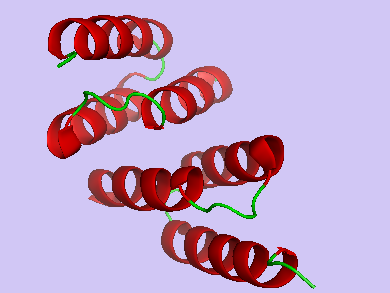In contrast to the commonly accepted idea that water molecules are essential for protein structure and function, Stephen Mann and co-workers, University of Bristol, UK, have shown that a solvent-free liquid haem metalloprotein can be formed at room temperature and pressure. To achieve this, they melted surfactant nanoconstructs that contained a single-component, stoichiometric myoglobin-polymer.
The solvent-free proteins displayed near-native structures and were demonstrated to bind gaseous ligands, including O2. The authors attribute this to the presence of 20 units of polyethylene oxide in the anionic polymer surfactant, which dissipate the thermal energy through conformational changes. This is thought to provide a flexible layer similar to that of the entrapped water shell that persists on the surface of proteins in nonpolar solvents.
- Reversible dioxygen binding in solvent-free liquid myoglobin
A. W. Perriman, A. P. S. Brogan, H. Cölfen, N. Tsoureas, G. R. Owen, S. Mann,
Nat. Chem. 2010, 2(8), 622 – 626.
DOI: 10.1038/nchem.700



